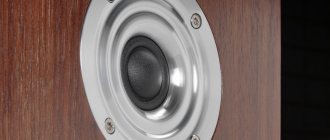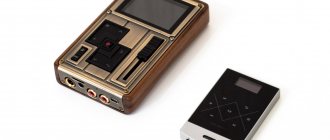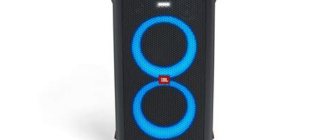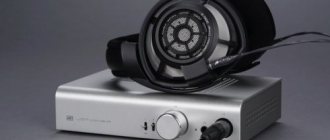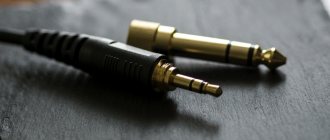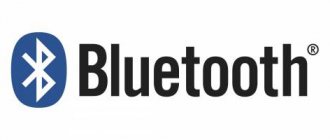Impressions from Digilab Digicon DAC-202
I learned about the existence of the Russian company Digilab, which produces professional studio equipment, thanks to the soundex.ru forum, when I asked myself the question of finding an inexpensive but decent-sounding DAC for my system.
I didn’t set sky-high demands, but I wanted the sound to be at least close to good average CD players and, accordingly, it would be pleasant to listen to. On the official Digilab website I read descriptions of simply amazing artistic value, so bright and beautiful that the Digilab Digicon DAC-202 became my first contender. It described how to perfectly reproduce Digicon DAC-202 aftersounds, which, like fat, well-fed carcasses, float in an absolutely black space, shining with their edges. I drooled all over the floor. Digilab Digicon DAC-202
Examples were given of how the Digicon DAC-202 either outperformed or was on par with the foreign Mytek DSD 192 DAC costing around $2000. Of course, before $2,000 was nothing, but after 2013, with our good exchange rate, it became unaffordable. The price of Digicon DAC-202 is approximately 22,000 rubles or 340 dollars. Previously, as they say, it cost $600, let’s say.
Mytek DSD 192
A DAC with good power supply, on an excellent PCM1794 chip, and digilab’s answers on the forum showed me that the person perfectly understands everything that can be understood in the matter of creating a DAC. Since all used candidates up to 40,000 rubles (the amount I initially drew) were eliminated for various reasons (mostly the DACs were either sold a long time ago, or the people who sold them were somehow “cloudy” and poorly accessible for communication), I decided to try Digilab Digicon DAC-202. Moreover, these reverberations and shiny carcasses of sounds in an insanely black space did not leave my head. On March 17, 2016, I contacted the Moscow Digilab and ordered a DAC for LT1469, since I was told that the LME49860 op-amps, which I wanted to order, were not yet available and therefore the order with them would take a long time to be fulfilled, but for the LT1469 quickly. Well, okay, I’m not the one, I still haven’t heard of the other, the reviews about both op-amps at the output were excellent.
Guys really like these inscriptions
For example, they said about the LME49860 that it has a very audiophile rich sound with rich aftertones. And about the LT1469, it’s a sound with very fast transients, a compromise between the wild clarity of studio monitoring sound and audiophile presentation. I was given an invoice for the DAC, with delivery of 24,000 rubles and I had an incident with payment. I needed to pay using a card from some bank and I was advised (by a person from digilab) that it was easier to do this through alphaclick on the alphabank website. After which I did just that and my Sberbank card was instantly blocked for “dubious” actions. I had to go to Sberbank and explain the situation where, before my eyes, my card was suddenly cut with scissors. I then wrote something there, signed it, and ordered a reissue of the card, after which I was left for a week and a half without a card, waiting for it to be produced. It’s good that at least these 24,000 were returned to me right away. After that, the next day I was still able to pay the bill at another bank. The DAC was supposed to be ready in 5 weeks, of course it’s a long time, but it was possible to wait for the sake of the sleek carcasses of floating sounds. This is not a detective story, so I won’t bore you, the ordered DAC was manufactured and still reached its owner only after almost 4 months. During this time, I bought 3 other DACs in China, which arrived to me from China in 6-12 days, a couple of which I was delighted with. Well, it’s even more interesting, there’s something to compare with, to see why the $2,000 Mytek cried. Apart from almost 4 months of waiting, the delivery itself, from the moment the box with the Digilab Digicon DAC-202 DAC left the walls of Digilab in Moscow, was delivered to me personally within 3 days. This could have happened faster, but it was the weekend. The delivery itself pleasantly surprised me, 5 points here.
My Young Pioneer Kit
I found myself holding a long box in my hands. Everything was packed well, after unpacking I saw that the box was branded, Digilab, with the appropriate inscriptions. Inside the box lay the DAC itself with rather, I would say, controversial proportions - it’s like a black square tube, the length of the front is for some reason less than the width of a standard amplifier by 5 centimeters, and its depth is only 10 centimeters. Therefore, I can assume a very modest size the board itself. In my Chinese DACs, the boards were definitely larger, and they were packed to the brim with bindings. After the Chinese, even DIY, the DAC-202 certainly looks just clumsy. The connections on the sides are ugly. The DAC itself doesn't even have legs. Well, it seems like nonsense - putting a metal DAC (without legs) on top of an amplifier that costs several thousand dollars and you can easily scratch its top cover and the very bottom of the DAC. Well, maybe in professional equipment it is not customary to be careful users, but in home audio this is not the case. By design, again, there are some scary screws right on the front panel, on top there is a “boyish” inscription from the gopniks from the neighboring yard in huge letters (8 centimeters in height) - Digilab. Honestly, an ordinary Diy Chinese case would be globally neater than this metal pencil case of unclear proportions. But I knew very well what to expect from the design, so it wasn’t very important to me. I found the legs in my supplies and glued them on, but for the rest - I want sound, shiny carcasses of sounds, etc. Well, like a penguin, with a fat body in the rocks. The long production of the DAC itself, as they explained to me, is fatal and endless force majeure, but oh well, just keep in mind when ordering that it most likely won’t happen quickly. This also leads to the conclusion that these DACs simply physically cannot become widespread - all copies turn out to be very rare, difficult to obtain and unique in their own way. During my wait, I was offered several times different op-amps, because they suddenly appeared, and the last time even a board of some other layout, which eventually had some problems and the need for further testing. Well, due to the long wait, Digilab complied with my request to include an XLR-RCA cable in the kit, since the Digilab Digicon DAC-202 has only an XLR output, and I don’t have one such amplifier in the system. Therefore, I immediately received the DAC with the necessary wires. Can you imagine how much I wanted to listen to this Digilab Digicon DAC-202? How long was I willing to wait for this Digilab Digicon DAC-202 in order to evaluate with my own ears the achievements of the Russian manufacturer? I was really interested in listening to this DAC. I previously listened to audio recordings taken from the output of this DAC-202 and noted in them that most of all I liked the sound with the output to the LME49860 op-amp. In the end, I got the Digilab Digicon DAC-202 DAC using the LME49860 op amp, just like I originally wanted.
DAC-202
And so I excitedly connect the Digilab Digicon DAC-202 to the Yamaha A-S1000 amplifier and JBL 4312B MKII Control Monitor speakers. Having first turned off the almost 2 times cheaper Xiang Sheng DA-3A DAC, which I had listened to before. The source, as for the Xiang Sheng DA-3A, is a personal computer, from which the sound is optically output to the DAC [email protected] Linux operating system with a lowlatency kernel and alsa sound subsystem tuned to bitperfect. The conditions are equal. For the first listen, I chose the album by the Night Snipers group “Rubezh”. The main focus was on listening to the songs “31 Spring”, “Frontier”, but the acoustic songs were also listened to carefully. In general, yes, the Digilab Digicon DAC-202 produces a recognizable sound, I hear the character of the PCM1794. The DAC does not click or squeak, i.e. Everything is fine with the sibilants, due to their absence. I would rate the resolution as average. But. I think you were waiting for this word. But the trouble is that before that I listened to the 200 dollar Xiang Sheng DA-3A (deluxe version). In principle, in terms of tube output, Xiang Sheng and Digicon DAC-202 are practically the same, but I already wrote in the review of the Chinese DAC that its op-amp output is globally better. In general, in short, there is no spark of God in the Digilab Digicon DAC-202. Everything is drab, mediocre. Sorry, but I didn’t see or hear these very reverberations, thick polished sounds in the blackness of the Universe. After the sparkling one, where every string sings, where the transients are phenomenal, where the detail is sky-high, the Xiang Sheng DA-3A on the same PCM1794a, although slightly rough in a peasant way, which by the way adds charm to the sound, the Digilab Digicon DAC-202 gives a sound that seems to be and I don’t want to find fault, but there’s nothing to praise either. Formally, the sound is natural, but you don’t feel the music, the screech of the guitar doesn’t catch you, and there’s simply no that very screech, or the creepy sliding of your fingers along the guitar string. Xiang Sheng DA-3A is cheaper and plays significantly better. I am not advertising the Xiang Sheng DA-3A; another Chinese DAC based on the Saber ES9018 in my collection reaches even higher heights, forgive the tautology. Based on the criteria - is the Digilab Digicon DAC-202 a good DAC for $340, then probably yes. From this point of view, this is an excellent DAC, there are no obvious flaws in it, the sound thanks to the PCM1794 is recognizable, but muted emotionally. I stomp my foot, slam my hand, well, it doesn’t work, a stone flower doesn’t appear for me. The DAC is good, if I didn’t have other options, I might have thought that the device was profitable. But the Xiang Sheng DA-3A is simply a different universe. It seems to me that the comparison with Mytek was somehow unsuccessfully embellished.
The main features that I would write down as a minus for the Digilab Digicon DAC-202: The resolution is not high enough The sound lacks sharpness The sound is emotionally muffled
I would consider the advantages: Natural sound delivery Overall good speed
In the end, I listened to a well-built mid-range DAC with a natural presentation, but like all average, it is not a failure, but also not the pinnacle when you listen to your favorite artists in ecstasy. Inexpensive, thoughtfully crafted DAC. Of course, I connected other acoustics (Onkyo D-500 II Liverpool bookshelf speakers, Diatone DS-501 floor speakers) and other amplifiers (Yamaha CA-2000, Sony 555ESX, Sony 333ESJ mosfet), and included various performers from Terney Sutton to Michael Jackson and Madonna , but everything said above remains true in all cases.
DIGICON ADC-202STUDIO ANALOG TO DIGITAL CONVERTER
DIGICON ADC-202 is a studio analog-to-digital converter built on the basis of high-quality specialized digital chips from Crystall/Cirrus Logic (USA) - CS5381 and analog chips from BURR-BROWN (USA). Supports bit depth up to 24 bits and sampling frequencies 192 kHz, 96 kHz, 88.2 kHz, 48 kHz, 44.1 kHz.
The ADC has digital overload indicators located on the front panel - 0 dBFS, a seven-segment indicator displaying the current sampling frequency, an ADC operating mode switch and an EXT WCK LED indicating the activation of the “external clock generator” mode.
The rear panel contains: symmetrical analog inputs (XLR), galvanically isolated digital outputs: AES/EBU (XLR); SPDIF coaxial (RCA) and optical (TOSLINK), as well as WORDCLOCK clock input and output (BNC).
The high stability of the internal oscillator, low level of noise and harmonic distortion allow the device to be used both in recording studios and in television and radio broadcasting.
The device is housed in a standard 19″ 1 U rack housing with a built-in power supply.
The ADC-202 is available in two versions, differing in the input preamplifier. The opinions of numerous experts can be summarized as follows:
- Preamplifier using LME49860 op amp - natural, uncolored sound. Recommended for universal applications.
- Preamplifier using AD8620 op amp - slightly colored, fatty sound.
Specifications:
| Analog input | 2 XLR balanced 5 kOhm |
| Input level at 0 dBFs | + 16 dBU unbalanced, + 10 dBU balanced |
| Digital outputs | AES/EBU XLR - 110 Ohm balanced, 6 VS/PDIF coax. RCA - 75 Ohm unbalanced, 0.8 VS/PDIF opto - Toslink |
| Clock input | BNC - 75 Ohm, TTL |
| Clock output | BNC - 75 Ohm, TTL |
| Dynamic range | 115 – 117 dB unweighted, 118 – 120 dB A-weighted |
| THD+N | 0.00032 (nom) — 0.00064 (max) % |
| Crosstalk | >120 dB |
| Internal clock generator | 44.1, 48, 88.2, 96, 176.4, 192 kHz; jitter « 1 pS RMS |
| External clock synchronization | |
| EC1 mode | 44.1, 48, 88.2, 96, 176.4, 192 kHz (± 100 ppm), itter « 1 pS RMS |
| EC2 mode | 30 - 54, 60 - 108, 120 - 216 kHz; jitter « 200 pS RMS |
| Supply voltage: | 220 V AC, 50/60 Hz |
| Power consumption: | 10 W |
| Dimensions: | 482 x 44 x 90 mm |
| Weight | 2.0 kg |
| Gross | 2.1 kg |

